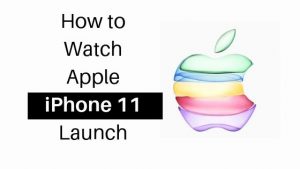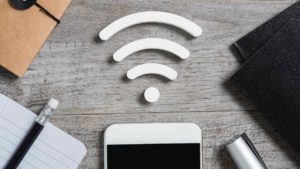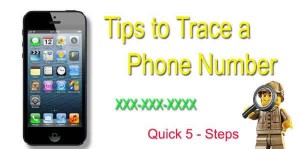A smartphone is a potent computer in your pockets, and with Android, part of its PC-like strength includes the ability to plug your device into any Windows, Mac, or Chrome OS machine and then click and drag files in either direction.
With the exception of iPhones, Android smartphones enable you to access their file systems directly from a PC, without the need for any complex interfaces or procedures. In reality, moving files to or from an Android smartphone is much the same as putting in an external hard drive and transferring data to or from it.

Everything you need is your smartphone, your computer, and a cord to link them — micro-USB or USB-C on the phone side, and USB-A or USB-C on the device side, depending on your gadgets’ specifications. (Most contemporary Android phones use USB-C, but most devices before 2016 use the older micro-USB standard.) Meanwhile, USB-A is the standard connection port used on computers, however, more and more models now have USB-C.) It’s possible that the same wire that connects your phone to its power charger will function.
As you purchase a new phone, transferring everything from the old phone to a new phone is one of the most important things. If you want to make the transferring process easier, please don’t miss this post, for it will tell you 4 practical approaches to transfer everything from the old phone to the new phone. So, you can make the data transfer more convenient from Android to Android, from iPhone to iPhone, from Android to iPhone, and vice versa.
Do you understand? Good. Regardless of whether you have a Windows, macOS, or Chrome OS PC, and here is what you need to do next:
Bonus: How to Transfer contacts from Android to iPhone
1. Transfer Files from Android to iPhone (Move to iOS)
If you want to transfer everything from Android to iPhone, Move to iOS is a helpful tool. Your contacts, message history, camera photos and videos, web bookmarks, mail accounts, and calendars can be moved from the old Android to the new iPhone without trouble.
Steps on how to move everything from Android to iPhone with Move to iOS:

- Download the app on your Android phone in advance, and make sure your iPhone and the Android phone are linked to the same Wi-Fi;
- When you set up your new iPhone and see the App & Data page. please tap on the “Move Data from Android” and “Continue” icons;
- Then you will receive a code on the iPhone. You need to enter Move to iOS app on the Android phone and type the code on it;
- Choose the data you desire to transfer and click on the “Next” button. The software will begin to transfer the files from Android to iPhone.
2. Transfer Files from iPhone to Android (Google Drive)
If you are an iPhone user and planning to switch to Android you have many options. If you have very good internet connection you can use Google Drive to transfer files from your iPhone to Android.

- On your iPhone install Google Drive
- Backup all your files including Contacts, Calendar Events, Photos and Videos.
- Now Login using the same gmail account on your Android mobile
- Now you can download all the files to your phone. Also, you have all the files in cloud and you can see them from anywhere using your Google account.
If you are a Samsung user, you can choose the Samsung Smart Switch. It can send your contacts, photos, calendars, documents, and more from the old iPhone to the new Samsung. If your new phone’s brand is LG, you can choose the LG Bridge. Actually, many Android brands have their own transfer apps Like Smart Switch and LG Bridge, so you needn’t worry about that.
Using Smart Switch to transfer Files
- On your new phone, go to the Settings app and click on the “Cloud and accounts”, and then you can see the “Smart Switch” option on it;
- On the other device, please download the software on the Play Store;
- Next, connect two phones with a USB cable and a USB connector;
- Run the program on your new device and click the “Start” icon. Then you need to follow the prompts;
- After connecting, please select the data types to transfer on your old phone. At last, click the “Transfer” icon, your selected data will be sent from the old iPhone to the new Android phone.
3. Transfer Files from Android to Android (MobKin)
To start with the File transfer you need an App to make the work, I’m going to use MobKin Transfer for Mobile, This is an all-in-one transfer application, and you can transfer 8 main sorts of data from Android to Android, including contacts, call logs, text messages, photos, music, videos, apps, and documents. Thus, you can transfer almost all the whole data from Android to Android with this app in 1 click. If needed, you can choose to clear the data on the target Android device before transferring.

- Download MobiKin Transfer for Android and install it on your computer. Then launch the app.
- Connect your both Android phones to the computer with USB cables and enable USB debugging on the phones;
- Once connected, you will see two Android phones on the screen. Now, you can select the data on the middle panel and click on the “Start Copy” icon.
The program will transfer your selected files from the old phone to the new one automatically.

What’s more, this app has two connecting methods. On one hand, you can transfer files with USB cables. On the other hand, if you want to transfer data from the old Android phone to the new Android phone wirelessly, you can connect the Android handsets to the computer via Wi-Fi.
Besides, this app is not only compatible with Android devices but also supports iOS devices, so you can also use it to transfer data from iOS to iOS, from Android to iOS and vice versa.
4. Transfer Files from iPhone to iPhone (AirDrop)
To transfer files from iPhone to iPhone is not difficult, because they are the same OS, you can transfer the files you want via AirDrop directly. However, if there are too many files to transfer, it will take more time, and you are required to select the data manually.
- Switch on the Bluetooth, Wi-Fi, and AirDrop on both iPhones. Then you need to choose the “Contacts only” or “Everyone” according to your requirements;
- Then Pick out the files you want to transfer on your source iPhone, and click the “Share” icon;
- Finally, choose the “AirDrop” option and select your new iPhone on the interface. Please tap on the “Receive” icon on your new phone. The data will be transferred from the old phone to the new one soon.
It is believed that the solutions mentioned above will be effective to help you solve how to transfer everything from old phone to new phone, despite the Android and iOS OSes. By the way, you can mark this page on your browser and read it again when you need it. Thanks for reading.
5. Transferring files from your Android phone to a Windows (Bluetooth)
Is Bluetooth turned on on your computer? Perhaps you have a Bluetooth USB dongle or your gadget has built-in Bluetooth. In any case, transferring data from Android to Windows through Bluetooth file transfer is a viable alternative, especially for smaller files.
- To begin, you must first enable Bluetooth on Windows, followed by Android.
- To launch Settings on Windows, press Win + I. Select the Bluetooth & other devices tab on the left of the Devices section. Turn Bluetooth on and then click Add Bluetooth or other device. Choose Bluetooth once more to start searching for suitable devices.
- Simultaneously, on Android, access the Quick settings panel by swiping down twice from the top of the screen. Long-press Bluetooth here. Tap on the name of your Windows PC under Available devices in the subsequent menu.
- Sit tight as your phone attempts to connect to your computer. To pair them, both devices will ask you to confirm a security code. To link the two, tap Pair on your Android device and Yes on your PC. When the pairing procedure is complete, your PC will send you a Device Ready notification.
- Once you’ve established a connection, look for the Bluetooth icon in the System Tray in the bottom-right corner of your PC. Select Receive a file from the context menu, then click Next to begin the transfer.
- Meanwhile, navigate to the file you want to transfer using your Android file browser or the Gallery app. Use the Transfer option, choose Bluetooth to share the data, and then select your PC from the list that appears.
- And once data has been transmitted, you should receive notification that the file transfer was successful. When asked where you want to store it, choose to your desired location and click Finish.
6. Transferring files from your Android phone to a Windows (wire)
Things are as easy as they can be with Windows.
- Simply plug your phone into any available USB port on your computer, then turn on your phone’s screen and unlock it.
- Slide down from the top of the screen to get a notice about the existing USB connection. At this point, it’s likely that it’ll inform you that your phone is just plugged for charging.
- Click the notification to open the menu, then pick “Transfer files” or “File transfer.” If you only want to transport media files, you may utilize the “Transfer pictures” (also spelled “PTP”) option, which will use your phone as a digital camera.
- Once you’ve decided, go to your desktop and launch a File Explorer window using the technique that works best for your Windows setup:
- In the Windows taskbar, choose the File Explorer icon.
- Click the Start button to open the Start menu. Tap on This PC or Computer
- On your desktop, click the This PC, Computer, or My Computer icon.
- Finally, amid other portable devices and drives, seek an icon symbolizing your phone.
- Click or double-click the icon, and you’re done!
- You’re looking at the internal storage of your Android phone. You may now explore directories with your mouse, drag and drop files between your phone and PC, and modify the data in any manner you choose.
7. Transferring files from your Android to MAC
Do you own a Mac? For you, the Android file transfer process is a little more difficult — but don’t worry, it’s still fairly simple.
The biggest difference is that you would need to download and install an official Google software called Android File Transfer before things could function.
- To use the application, your Mac must be running macOS 10.7 or later, and your Android smartphone must be running Android 3.0 or later – which should be a given with any relatively current Android product.
- When the software is installed on your Mac, just plug your phone into the computer, switch on your phone’s screen, unlock the device, and look for the same USB status notice mentioned before.
- Select “Transfer files” or “File transfer” from the notice.
- The Android File Transfer application should then launch on your Mac, and you would be able to access and transfer files from your phone’s storage to your heart’s delight.
If somehow the official Android File Transfer app doesn’t function properly for you — a typical concern among Mac users these days — consider the well-reviewed third-party Commander One Pro as an alternative.
Alternatively — well, read on to the end of this article for another choice.
8. Transferring files from your Android device to a Chrome OS computer
Given that Google is the driving force behind both of those operating systems, you’d expect file transfers between Android phones and Chromebooks to be as straightforward as possible – and you’d be completely correct.
- To link your Android phone to a Chromebook, just plug it into any open USB port
- Then click the USB charging alert on the device and choose “Transfer files” or “File transfer” from the notification that appears — or choose “Transfer photos” or “PTP” if you would like your mobile to be treated like a webcam, with a focus purely on multimedia files.
- After that, the Chrome OS Files app would appear on your Chromebook, with your phone listed as one of the storage choices.
- The system will almost certainly urge you to back up all of your phone’s media files to Google Drive; you may accept this or ignore it and just drag and drop items in either way as required.




![Read more about the article How To Find Your WiFi Password [2021]](../https@610698-1978843-raikfcquaxqncofqfm.stackpathdns.com/wp-content/uploads/2019/10/Find-wifi-password-300x169.jpg)
